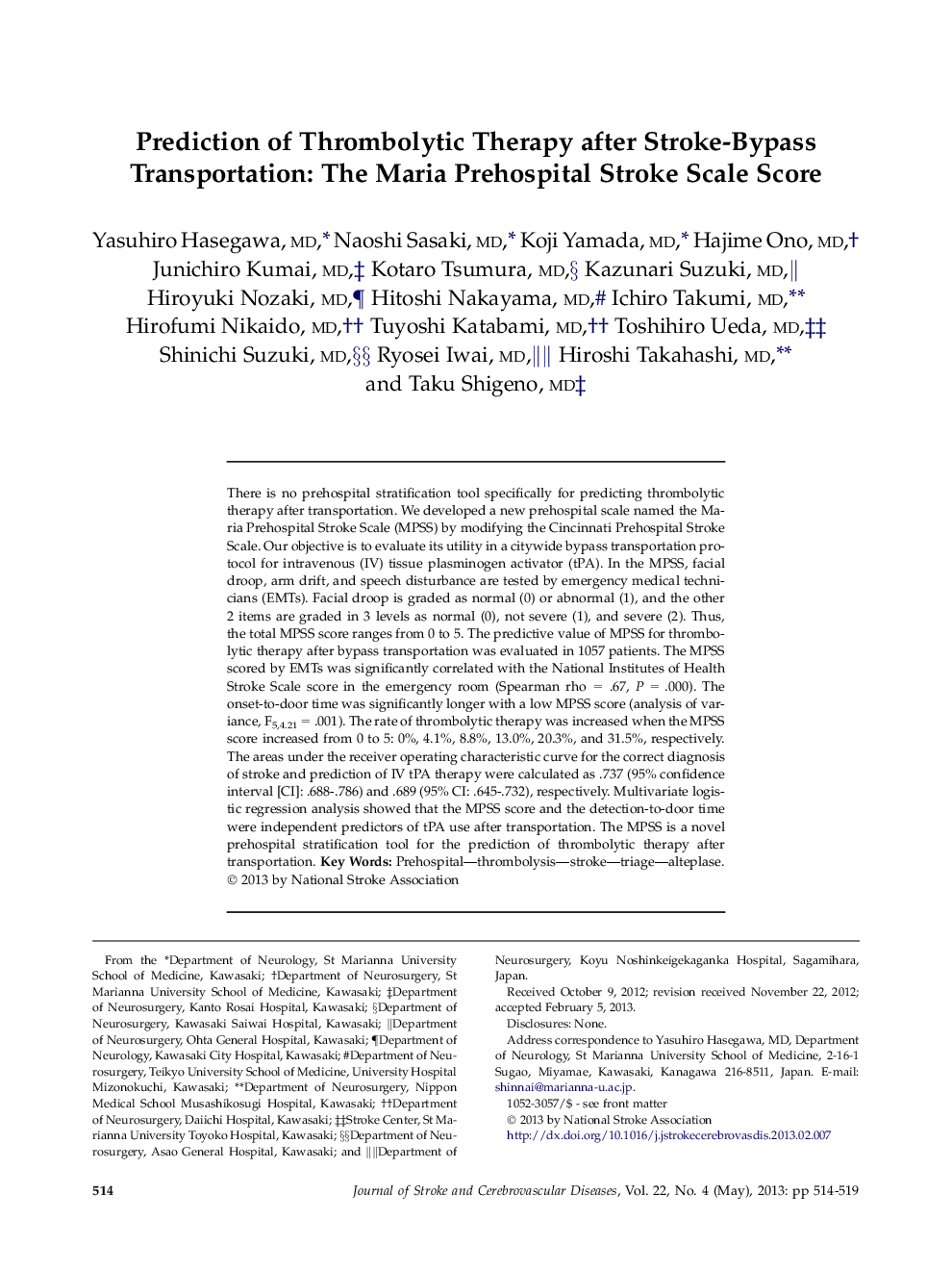| Article ID | Journal | Published Year | Pages | File Type |
|---|---|---|---|---|
| 2710838 | Journal of Stroke and Cerebrovascular Diseases | 2013 | 6 Pages |
There is no prehospital stratification tool specifically for predicting thrombolytic therapy after transportation. We developed a new prehospital scale named the Maria Prehospital Stroke Scale (MPSS) by modifying the Cincinnati Prehospital Stroke Scale. Our objective is to evaluate its utility in a citywide bypass transportation protocol for intravenous (IV) tissue plasminogen activator (tPA). In the MPSS, facial droop, arm drift, and speech disturbance are tested by emergency medical technicians (EMTs). Facial droop is graded as normal (0) or abnormal (1), and the other 2 items are graded in 3 levels as normal (0), not severe (1), and severe (2). Thus, the total MPSS score ranges from 0 to 5. The predictive value of MPSS for thrombolytic therapy after bypass transportation was evaluated in 1057 patients. The MPSS scored by EMTs was significantly correlated with the National Institutes of Health Stroke Scale score in the emergency room (Spearman rho = .67, P = .000). The onset-to-door time was significantly longer with a low MPSS score (analysis of variance, F5,4.21 = .001). The rate of thrombolytic therapy was increased when the MPSS score increased from 0 to 5: 0%, 4.1%, 8.8%, 13.0%, 20.3%, and 31.5%, respectively. The areas under the receiver operating characteristic curve for the correct diagnosis of stroke and prediction of IV tPA therapy were calculated as .737 (95% confidence interval [CI]: .688-.786) and .689 (95% CI: .645-.732), respectively. Multivariate logistic regression analysis showed that the MPSS score and the detection-to-door time were independent predictors of tPA use after transportation. The MPSS is a novel prehospital stratification tool for the prediction of thrombolytic therapy after transportation.
